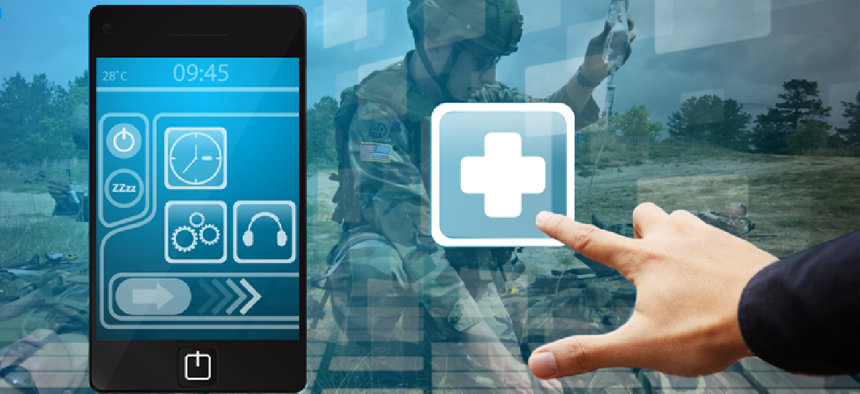Army looks to digitize battlefield medical data

The challenge: Using classified networks to transmit secure-but-unclassified health data and connect field medics to distant treatment facilities.
When a wounded U.S. soldier is rushed from the battlefield to a medical facility, the injury and treatment data that accompanies the casualty comes on paper, pinned to his or her uniform.
Digitizing that process would bring obvious benefits -- data from the front could precede a patient to the hospital, and it would be far less likely to get lost or destroyed in transit. So the Army and the Defense Health Agency have turned to Management Sciences Inc. (MSI) and Cog Systems to develop a secure mobile solution.
Since Army field medics already carry secure mobile devices, the communications infrastructure is already in place. But the very security of that network is part of the challenge.
Those devices are running on a classified network, Cog Systems Co-Founder and Chief Marketing Officer Carl L. Nerup explained "because they have battlefield data on there." And while protecting medical data is critical, running at the classified level makes it impossible for doctors at a field hospital or at Landstuhl Regional Medical Center in Germany -- to which injured warfighters are often transported within hours -- to access the records in real time.
"Once data is marked as classified," Cog Systems CEO Daniel Potts said, "it’s got to go through the cleansing process" to be declassified, "which obviously is manual and takes a lot of time."
Cog Systems and MSI are developing a "dual persona" solution that will separate the unclassified medical data from the classified tactical data. Field medics and treatment facilities will connect and share information over an unclassified virtual private network that tunnels through the classified battlefield network.
"Back in the day, our friends at Fort Meade used to have two computers on their desk," Nerup said, until secure virtualization "allowed DOD to collapse to one machine."
"We have been able to take that same technology and apply it to connected devices."
The prototype solution, which Nerup and Potts said they hope to deliver by the end of the year, also will provide a two-way voice channel for remote telemedicine teams to communicate with combat medics in real time. The prototype will use HTC devices rather than the Samsung Galaxy S5 units are that currently in the field. The Army will soon upgrade to new equipment, Nerup said, and "our technology can be ported to just about any device."
But because Cog Systems' D4 Secure Platform technology, which is what isolates the classified and unclassified data, lives "just above the chipset and below the operating system … we need the cooperation on the OEM," he added.
The contract, which was awarded under the Army’s Small Business Innovation Research program, is relatively small -- 18 months to develop a prototype solution. (MSI is an Albuquerque, N.M.-based small business; Cog Systems a Sydney, Australia-based firm with a U.S. subsidiary that handles all the SBIR work.) But Potts said he's bullish on the broader potential -- not just for battlefield medicine, but for any government mission that requires multiple mobile security environments.
"We have a really cool technology that’s actually quite mature," Potts said, noting that Cog Systems has worked with "most of the western governments" on other projects. "This is exciting because it puts it all together."
NEXT STORY: Building tools to secure computer processors





